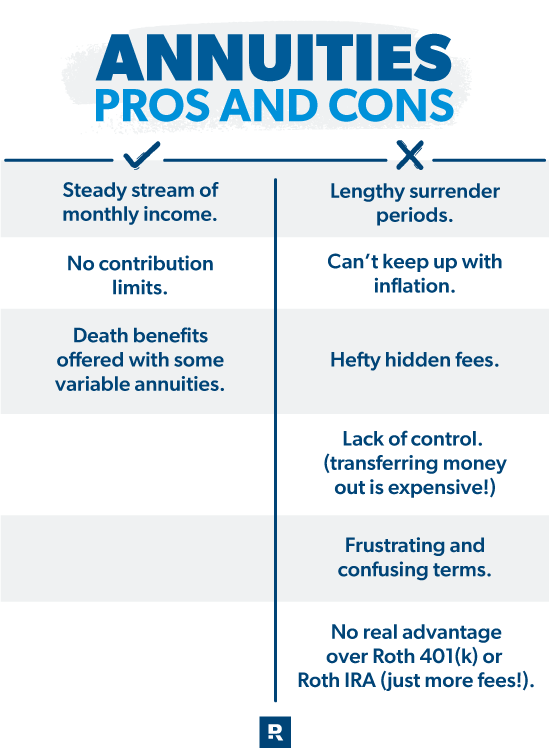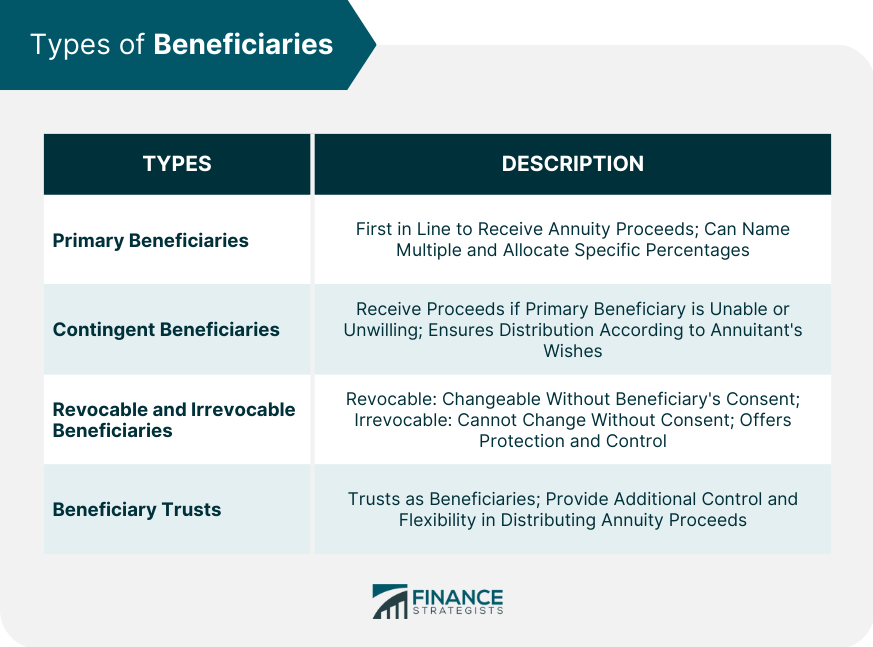All Categories
Featured
Table of Contents

Comprehending the various fatality benefit choices within your inherited annuity is necessary. Carefully review the agreement details or speak with an economic advisor to determine the certain terms and the ideal way to proceed with your inheritance. As soon as you acquire an annuity, you have several alternatives for obtaining the cash.
In many cases, you could be able to roll the annuity into an unique kind of individual retired life account (INDIVIDUAL RETIREMENT ACCOUNT). You can choose to receive the whole remaining equilibrium of the annuity in a solitary settlement. This option supplies prompt access to the funds however includes significant tax obligation consequences.

If the acquired annuity is a qualified annuity (that is, it's held within a tax-advantaged pension), you could be able to roll it over right into a brand-new pension. You don't need to pay taxes on the rolled over quantity. Beneficiaries can roll funds right into an acquired individual retirement account, an one-of-a-kind account specifically created to hold possessions inherited from a retired life strategy.
Are Flexible Premium Annuities taxable when inherited
Other kinds of beneficiaries generally should withdraw all the funds within 10 years of the proprietor's fatality. While you can not make additional contributions to the account, an acquired IRA supplies an important advantage: Tax-deferred growth. Incomes within the inherited individual retirement account collect tax-free up until you begin taking withdrawals. When you do take withdrawals, you'll report annuity revenue similarly the plan participant would have reported it, according to the internal revenue service.
This option offers a stable stream of revenue, which can be useful for long-term economic planning. Usually, you need to begin taking distributions no more than one year after the proprietor's fatality.

As a recipient, you won't undergo the 10 percent IRS early withdrawal penalty if you're under age 59. Attempting to determine tax obligations on an inherited annuity can feel complex, yet the core principle rotates around whether the added funds were previously taxed.: These annuities are moneyed with after-tax bucks, so the recipient typically does not owe taxes on the original contributions, yet any type of profits accumulated within the account that are dispersed are subject to regular revenue tax obligation.
How are beneficiaries taxed on Multi-year Guaranteed Annuities
There are exemptions for partners that inherit qualified annuities. They can normally roll the funds right into their very own IRA and defer taxes on future withdrawals. In any case, at the end of the year the annuity company will file a Kind 1099-R that demonstrates how a lot, if any, of that tax obligation year's circulation is taxable.
These tax obligations target the deceased's total estate, not simply the annuity. These taxes typically only effect very big estates, so for a lot of successors, the focus should be on the income tax ramifications of the annuity.
How is an inherited Index-linked Annuities taxed
Tax Obligation Therapy Upon Death The tax obligation treatment of an annuity's fatality and survivor advantages is can be fairly complicated. Upon a contractholder's (or annuitant's) fatality, the annuity might undergo both revenue taxation and estate tax obligations. There are different tax therapies relying on who the recipient is, whether the owner annuitized the account, the payout approach chosen by the recipient, and so on.
Estate Taxes The government estate tax obligation is a very dynamic tax obligation (there are many tax obligation brackets, each with a higher rate) with rates as high as 55% for large estates. Upon fatality, the internal revenue service will include all residential or commercial property over which the decedent had control at the time of fatality.
Any tax in excess of the unified debt is due and payable 9 months after the decedent's fatality. The unified credit history will fully sanctuary reasonably small estates from this tax obligation.
This discussion will focus on the inheritance tax treatment of annuities. As held true throughout the contractholder's lifetime, the internal revenue service makes an essential distinction between annuities held by a decedent that remain in the buildup stage and those that have entered the annuity (or payout) stage. If the annuity remains in the build-up phase, i.e., the decedent has actually not yet annuitized the contract; the complete death benefit assured by the contract (consisting of any kind of improved death advantages) will be included in the taxable estate.
Taxes on inherited Fixed Income Annuities payouts
Instance 1: Dorothy possessed a dealt with annuity agreement released by ABC Annuity Firm at the time of her death. When she annuitized the agreement twelve years ago, she selected a life annuity with 15-year period certain. The annuity has actually been paying her $1,200 each month. Since the contract guarantees payments for a minimum of 15 years, this leaves 3 years of payments to be made to her child, Ron, her assigned beneficiary (Variable annuities).

That worth will be included in Dorothy's estate for tax objectives. Upon her fatality, the settlements stop-- there is absolutely nothing to be paid to Ron, so there is nothing to consist of in her estate.
Two years ago he annuitized the account choosing a life time with cash refund payment alternative, calling his child Cindy as beneficiary. At the time of his fatality, there was $40,000 primary remaining in the contract. XYZ will pay Cindy the $40,000 and Ed's administrator will certainly include that amount on Ed's estate tax obligation return.
Considering That Geraldine and Miles were married, the advantages payable to Geraldine stand for home passing to an enduring partner. Annuity cash value. The estate will have the ability to use the unrestricted marital reduction to stay clear of taxation of these annuity benefits (the value of the advantages will certainly be listed on the estate tax obligation type, together with an offsetting marriage reduction)
Annuity Rates beneficiary tax rules
In this situation, Miles' estate would certainly consist of the worth of the remaining annuity repayments, however there would be no marital reduction to counter that incorporation. The very same would use if this were Gerald and Miles, a same-sex pair. Please keep in mind that the annuity's remaining value is established at the time of fatality.

Annuity contracts can be either "annuitant-driven" or "owner-driven". These terms refer to whose fatality will certainly set off repayment of fatality benefits. if the contract pays survivor benefit upon the fatality of the annuitant, it is an annuitant-driven agreement. If the survivor benefit is payable upon the death of the contractholder, it is an owner-driven contract.
There are situations in which one individual possesses the contract, and the determining life (the annuitant) is somebody else. It would certainly be nice to believe that a particular contract is either owner-driven or annuitant-driven, but it is not that straightforward. All annuity agreements released because January 18, 1985 are owner-driven due to the fact that no annuity contracts released because then will certainly be approved tax-deferred condition unless it contains language that triggers a payment upon the contractholder's death.
Table of Contents
Latest Posts
Highlighting the Key Features of Long-Term Investments A Closer Look at How Retirement Planning Works What Is Variable Vs Fixed Annuities? Pros and Cons of Various Financial Options Why Choosing the R
Analyzing Strategic Retirement Planning Everything You Need to Know About Tax Benefits Of Fixed Vs Variable Annuities What Is the Best Retirement Option? Pros and Cons of Fixed Index Annuity Vs Variab
Decoding How Investment Plans Work Everything You Need to Know About Financial Strategies Defining the Right Financial Strategy Pros and Cons of Fixed Interest Annuity Vs Variable Investment Annuity W
More
Latest Posts